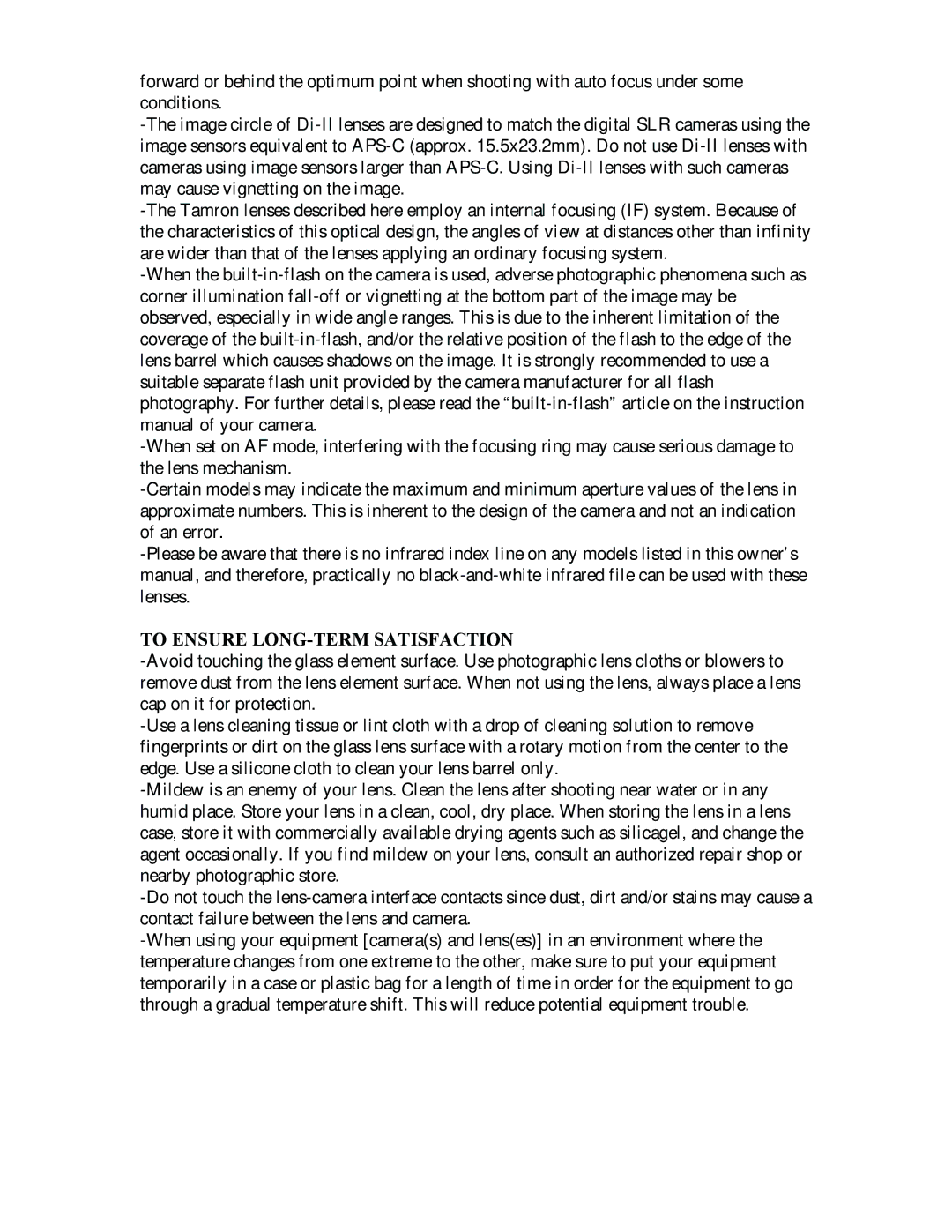AFB008N700, AFB008S700, AFB008C700 specifications
The Tamron AFB008C700, AFB008S700, and AFB008N700 lenses represent an evolution in optical technology, providing photographers with remarkable versatility and high-quality performance. Designed for varying camera systems, these lenses cater to Canon, Sony, and Nikon mounts, respectively, and offer a powerful solution for a variety of shooting situations.One of the defining features of these lenses is their exceptional focal length of 18-200mm, which allows for a broad range of applications, from wide-angle landscapes to close-up portraits. The versatility of the zoom range makes them perfect for everyday photography, travel, and events, where changing lenses frequently can be impractical.
Another standout characteristic is the advanced optical design. The use of multiple special low-dispersion and aspherical lens elements minimizes aberrations and improves image sharpness. This optical configuration contributes to stunning clarity and contrast across the entire frame, ensuring that every shot captures the intended detail and vibrancy.
Incorporating Tamron's innovative VC (Vibration Compensation) technology, these lenses offer enhanced stability, allowing photographers to shoot at slower shutter speeds without compromising image quality. This feature is particularly beneficial in low-light conditions or when capturing moving subjects, as it reduces the risk of motion blur.
Moreover, the lenses utilize a fast and precise autofocus system. This hybrid autofocus mechanism ensures quick acquisition of focus, even in dynamic scenes. Photographers can trust the responsiveness of the lenses, making them ideal for capturing spontaneous moments without delay.
The build quality is also commendable, with a robust design that ensures durability in diverse environments. The use of moisture-resistant materials provides added peace of mind for outdoor photography, allowing users to shoot in light rain or humid conditions without fear of damaging the lens.
Furthermore, the Tamron AFB008 series lenses are compatible with various camera features, including in-camera stabilization and focus tracking, enriching the user experience and expanding creative possibilities.
In summary, the Tamron AFB008C700, AFB008S700, and AFB008N700 lenses combine advanced technology with practical versatility, making them ideal tools for photographers who demand excellence in their craft. Whether for personal projects or professional assignments, these lenses deliver impressive performance, ensuring every photograph is a testament to quality.
